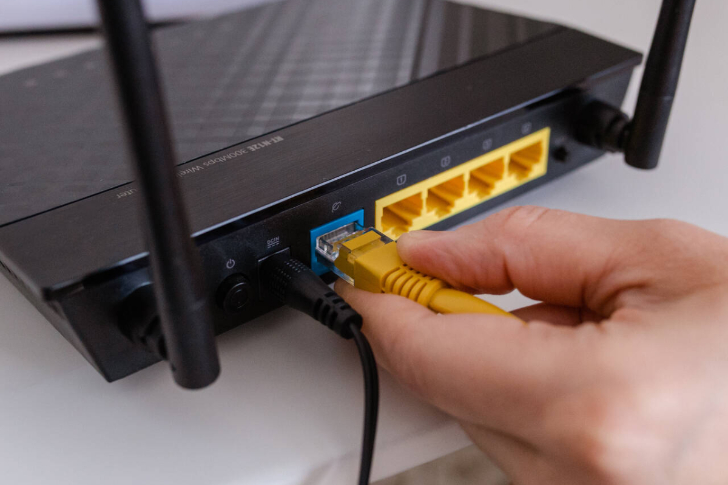In an increasingly interconnected world, reliable internet access has transitioned from a luxury to an essential utility. From remote work and online education to streaming entertainment and staying connected with loved ones, a stable and fast internet connection is paramount for daily life in the USA. However, the landscape of internet service providers (ISPs) across the country is diverse and often complex, with varying technologies, speeds, pricing structures, and service quality. Choosing the right internet provider requires careful consideration of individual needs, location-based availability, and a clear understanding of the associated costs.

This article delves into the key aspects of selecting an internet provider in the USA, exploring the different types of internet services, crucial cost factors, and providing illustrative cost tables to guide your decision-making process.
Decoding the Alphabet Soup: Types of Internet Services in the USA
The United States boasts a range of internet technologies, each with its own advantages and limitations in terms of speed, availability, and cost:
- Cable Internet: Delivered over the same coaxial cables used for cable television, cable internet is widely available in urban and suburban areas. It typically offers relatively high download speeds, suitable for streaming and online gaming. However, upload speeds are often significantly lower than download speeds due to the network infrastructure.
- DSL (Digital Subscriber Line) Internet: Utilizing existing telephone lines, DSL internet is another common option, particularly in areas with established landline infrastructure. However, speeds can vary significantly based on the distance from the provider’s central office, with speeds often decreasing the farther the user is located. Upload speeds are also typically lower than download speeds.
- Fiber Optic Internet (FiOS): This technology uses thin strands of glass or plastic to transmit data via light signals, offering the fastest and most reliable internet speeds, often with symmetrical upload and download capabilities. However, fiber optic networks are not as widely available as cable or DSL, primarily concentrated in more densely populated areas.
- Fixed Wireless Internet: This service delivers internet wirelessly from a provider’s tower to an antenna installed at the user’s home. It can be a viable option in rural or underserved areas where wired infrastructure is limited. Speeds and reliability can be affected by distance from the tower and environmental factors.
- 5G Home Internet: A newer technology leveraging 5G cellular networks to provide home internet service. Availability is still expanding, but it offers the potential for competitive speeds and ease of setup as it doesn’t require wired connections. Speeds can vary based on signal strength and network capacity.
- Satellite Internet: This option provides internet access via satellite and is typically available in even the most remote areas of the USA. However, it generally offers the slowest speeds, higher latency (delay), and often has data caps, making it less ideal for bandwidth-intensive activities like online gaming or heavy streaming. It also tends to be more expensive than other wired options.
The Price Tag of Connectivity: Factors Influencing Internet Costs in the USA
The cost of internet service in the USA is influenced by a variety of factors, making it essential to compare plans and providers carefully:
Location: Internet service availability and pricing can vary significantly depending on your geographic location within the USA. Rural areas often have fewer options and potentially higher costs.
Internet Speed (Download and Upload): Higher download and upload speeds generally come with higher monthly fees. The amount of speed required depends on the number of users in the household and their online activities (e.g., streaming, gaming, video conferencing).
Data Caps: Some internet plans impose monthly data usage limits. Exceeding these caps can result in overage charges or throttling of speeds. Unlimited data plans are becoming more common but may come at a premium.
Contract Length: Many providers offer promotional pricing for a limited period (e.g., 12 or 24 months) with a contract. After the promotional period ends, the monthly cost can increase significantly. Month-to-month plans are available but may be more expensive initially.
Equipment Fees (Modem and Router): Providers often charge a monthly rental fee for the modem and router. Purchasing your own compatible equipment can save you money in the long run.
Installation Fees: New service installations may involve a one-time fee. Look for providers that offer free or discounted installation.
Bundling with Other Services: Some providers offer discounts when you bundle internet service with other services like cable television or phone. Evaluate whether the combined cost is truly lower than purchasing each service separately.
Taxes and Additional Fees: Be aware of any additional taxes, surcharges, or administrative fees that may be added to your monthly bill.
Promotional Offers and Discounts: Keep an eye out for limited-time promotions, student discounts, or senior citizen discounts that can lower your initial costs.
Provider Reputation and Customer Service: While not directly reflected in the monthly price, the quality of customer service and the reliability of the network are crucial factors to consider. Reading online reviews and checking customer satisfaction ratings can provide valuable insights.











